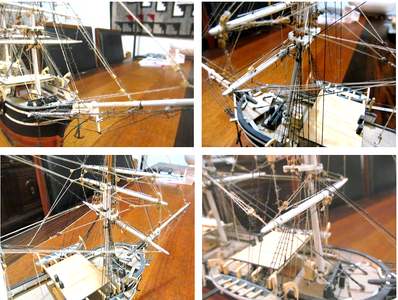I have purchased many books on model ship building but I can not find the information I think I am looking for. When I study plans for my model, there are drawings for the running rigging but I find it very hard to determine what kind of block I should be using. I can sort of figure it out by looking at the drawing, if it has multi lines indicated, but, is there a better way to determine what block I should use? What am I not seeing? Is there something I need to discover and learn? I am talking about running rigging for a model with out sails. I am working with the "Scientific Co." plans for the CW MORGAN. Granted not too advanced or high tech, but still fun for me. Is there a symbol key that might be on more sophisticated drawings? I use Historic Ship Models by W. zu Mondfeld for much of the info I need.
Thanks guys-
Mike Toole
in PA
Thanks guys-
Mike Toole
in PA










